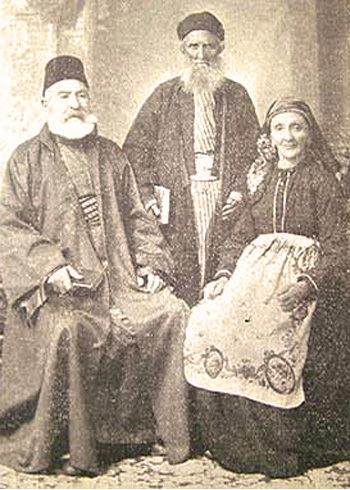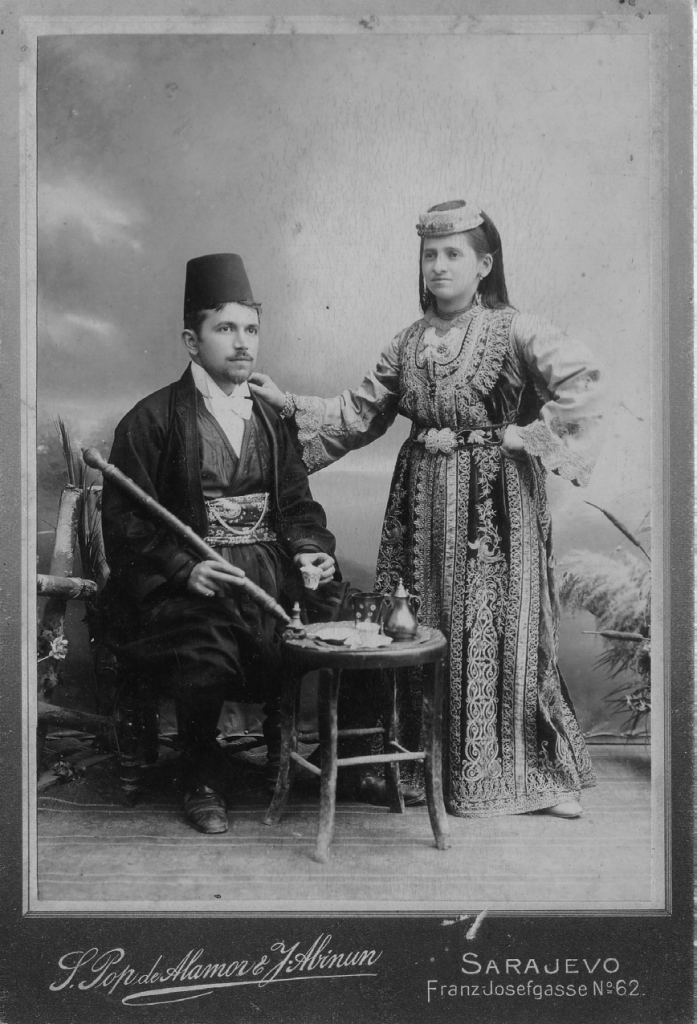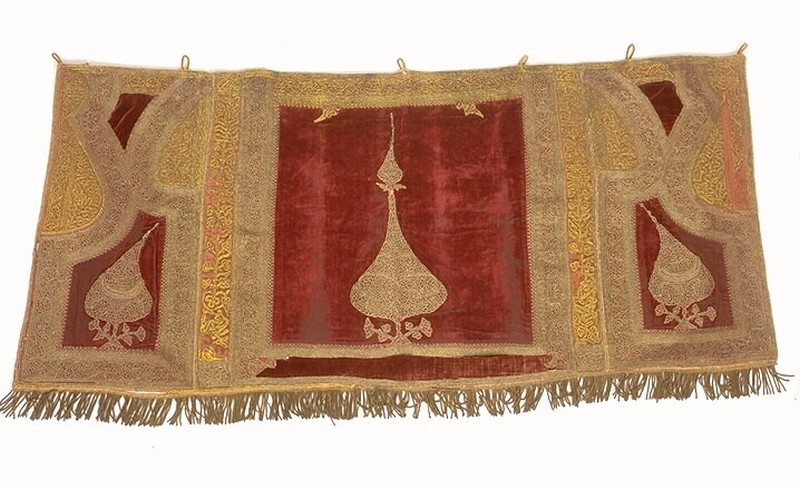In Sarajevo, where most of Bosnia’s Jews lived, the earliest refugees from the Iberian Peninsula began arriving around 1565, having first stopped in Italy, Greece, Bulgaria, and other regions under the Turkish domination. Belonging to the rayah (the term used by the Turks to designate non-Muslim populations under their control), as such they had a status equivalent to that of other non-Muslims. A certain autonomy to manage religious and community affairs was accompanied by various requirements and constraints, as well as repeated exactions by local pashas. For example, Jews had to step aside for any Muslim they encountered in the street, and they were forbidden to ride horses and bear arms, except when traveling; any Jew over the age of nine was required to pay a residence tax. During the first final decades of Turkish rule, until 1878, Jews had to pay a special tax, the bedelija, to avoid being drafted into the military. Jews were expected, moreover, to provide horses for maintenance work on roads and to the Turkish army when it launched campaigns.

The Turks imposed restrictions on clothing as well. In Bosnia, which had been conquered in 1463, Jews had the right to wear turbans, provided they were not too large and, most important, that they were yellow, excluding any other color. If a Jewish man wore a fez, as his ancestors did in Arabian Spain and descendants would continue to do long after the Turks were gone, it had to be dark blue. Similarly, wearing green was strictly prohibited to all non-Muslims, while shoes could only be black.
Such constraints led Sephardic women of the region to develop a very specific code of dress, the memory of which had been preserved by Jewish museums in the former Yugoslavia. Until the early twentieth century, for example, Jewish women in Bosnia continued to wear long, embroidered dresses called anteriyas, as well as tokados, small hats decorated with a row of ducats called the frontera in Judeo-Spanish. Hair remained hidden, though the back of the tokado was extended by long cloth fringes, named the purçul. And if widows dispensed with the frontera, young girls were content with displaying only a single ducat on their foreheads.

Beyond that, life for Bosnian Jews under Ottoman rule was more or less similar to that of other inhabitants of this poor and mountainous corner of the empire, far from the main roads and commercial centers of the era. Although the Jewish community here included numerous doctors and scientists, like the mid-nineteenth-century proto-Zionist rabbu Juddah ben Soloman Hai Alkalai, it was composed mostly of people of modest means who were no better off than other ethnicities in the province. A charitable association, the Benevolencija, was established to aid the most impoverished; it was still active during the recent interethnic war from 1992-95, to the benefit of country’s entire population.
Far from home
Winner of the Nobel Prize for literature, Ivo Andric set the scene for his Bosnian Chronicles in his native town of Travnik, a small city in western Bosnia that temporarily served as the capital of this Turkish province in the early nineteenth century:
On a hot morning in May 1814, Salomon Atijas, the patriarch of the town’s small Jewish community, reeking of garlic and untanned sheepskin, came to offer twenty-five ducats to the French consul. The latter had been ordered to close down the consulate in Travnik but did not have the means to finance his trip home. Atijas brought him the money because the diplomat, over the seven years he has spent in the town, showed kindness and care toward the Jews “in ways neither the Turks nor any other stranger had ever done”.
“No matter what part of this earth beyond Spain we might be in, we would always suffer, for we would always have two homelands. This much I know. But here in this place, life has been particularly harsh and degrading for us…We are wedged between the Turks and the Christian peasants, the poor, downtrodden peasants and the terrible Turks. Utterly cut off from our own kind, we try to preserve everything that reminds us of Spain, the songs, the food, and the customs, but the changes within us go on relentlessly; we can feel the erosion, the fading of memory”, old Atijas exclaimed to the western-bound voyager. In fact, whereas they were most grateful to Turkey for welcoming them after their expulsion from Spain, the Jews who landed in Bosnia suffered, more than other Sephardim, from their uprooting, cultivating nostalgia as the centuries passed for their “incomparable Andalusia”.
Ivo Andric, Bosnian Chronicles, Trans. Joeph Hitrec (New York: Alfred A. Knopf, 1963).
Austria-Hungary occupied Bosnia-Herzegovina in 1878 and annexed it in 1908. The region experienced rapid economic development during this period, notably under the impetus of Ashkenazic arrivals, who invested in industry and the intellectual and liberal professions. The Sephardic Jews here remained working as tradespeople and artisans, but their cultural level began to rise considerably. They say here that at the turn of the century, all the doctors in Sarajevo were Jewish.
After World War I, when Bosnia-Herzegovina itself integrated with the new realm of Yugoslavia, the Jewish youth of Sarajevo and the provinces became known for the political activism. While the Zionist movement was gaining influence throughout Yugoslavia, in Sarajevo, it was a radical Marxist organization, the Matatja, that attracted local Jewish youth. Established in 1923, this cultural and political organization soon boasted 1,000 members.

On the eve of the Second World War, Bosnia-Herzegovina contained 14,000 Jews, 8,000 of whom lived in Sarajevo. When Germany invaded Yugoslavia in April 1941, it handed Bosnia-Herzegovina over to the puppet state installed in Zagreb. As in Croatia, the Jews of Bosnia-Herzegovina were pursued by Ustashis with the support of Muslim gangs formed by the mufti of Jerusalem, the Palestinian Haj Amine el Husseini. This admirer of Hitler pushed for the formation of an SS division composed of Muslims called the Ansar, whose ferocity toward the Serbs and Jews rivaled that of the Ustashis.
A thousand Bosnian Jews managed to join the ranks of the Resistance, a third of whom died in combat. In the years following the liberation, half of the 2,200 survivors in the region made their aliyah to Israel. This is why, even before the 1992-95 war, the Jewish community in Bosnia-Herzegovina consisted of only around 500 members. This number had dropped even further due to the fighting and the transfer of refugees. In 2025, under a thousand Bosnian Jews are living in the country.